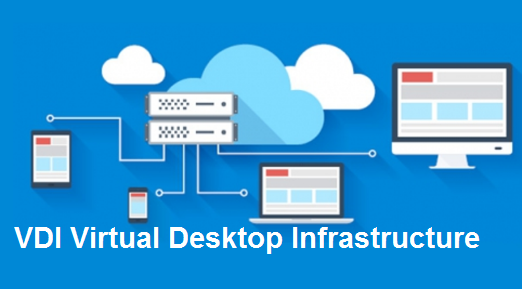VDI
What is VDI (virtual desktop infrastructure)
Desktop virtualization infrastructure is a technology that hosts a desktop environment on a central server, and it is a form of desktop virtualization so that desktop copies work inside virtual machines that are simulated on a central server and delivered to clients over the Internet.
The clients (or the endpoint) could be computers or any kind of other internet-connected devices such as tablets.
VDI aims to provide end-user virtual desktops and manage them on demand.
How does VDI work?
As we talked about virtualization, we mentioned that the hypervisor is responsible for managing the simulation process and controlling the division of computing resources between virtual machines, and in VDI the hypervisor divides the server into virtual machines that host virtual desktops, and the end-user reaches them remotely through the computer Via the internet.
The user can access virtual desktops using any device from anywhere, and all computer operations that the user performs on the virtual desktop machine is handled on the host server and not on the guest machine.
The user communicates with the desktop instances through the medium. This connection is a software-based gateway that acts as an intermediary between the user and the server.
Types of VDI
- Constant constant: The user can connect to the same desktop every time he connects to the virtual desktop, and the user can customize it to his needs and can save changes even after resetting the connection. Working with a steady, continuous virtual desktop is exactly the same as working with a personal physical desktop a user usually uses.
- Unstable or not permanent: There will be no virtual desktop dedicated to the user, but rather general desktops, and the user will not be able to save changes. It is simpler and cheaper than VID because there is no need to maintain dedicated desktops between sessions. This type is used in organizations that have a lot of workers on tasks, or in which there is a lot of employees who perform a large number of repetitive tasks and do not need a dedicated desktop.
Benefits of a virtual desktop infrastructure
- Remote access
- Cost-saving
- Security and data protection
- Centralized management




Comments
0 comments